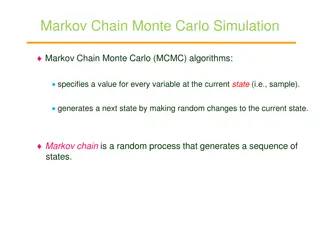Understanding Non-Probability Sampling Methods
Non-probability sampling involves selecting samples based on subjective judgement rather than random selection. This method may not give all population members an equal chance to participate. Types include convenience sampling, quota sampling, judgemental sampling, and snowball sampling.
Download Presentation

Please find below an Image/Link to download the presentation.
The content on the website is provided AS IS for your information and personal use only. It may not be sold, licensed, or shared on other websites without obtaining consent from the author. Download presentation by click this link. If you encounter any issues during the download, it is possible that the publisher has removed the file from their server.
E N D
Presentation Transcript
NON- PROBABILITY SAMPLING
NON- PROBABILITY SAMPLING The non-probability sampling method is a technique in which the researcher selects the sample based on subjective judgement rather than the random selection. In this method, not all the members of the population have a chance to participate in the study.
NON-PROBABILITY SAMPLING TYPES Non-probability Sampling methods are further classified into different types, such as convenience sampling, quota sampling, judgemental sampling, snowball sampling.
CONVENIENCE SAMPLING In a convenience sampling method, the samples are selected from the population directly because they are conveniently available for the researcher. The samples are easy to select, and the researcher did not choose the sample that outlines the entire population.
QUOTA SAMPLING In the quota sampling method, the researcher forms a sample that involves the individuals to represent the population based on specific traits or qualities. The researcher chooses the sample subsets that bring the useful collection of data that generalizes the entire population.
PURPOSIVE OR JUDGEMENTAL SAMPLING In purposive sampling, the samples are selected only based on the researcher s knowledge. As their knowledge is instrumental in creating the samples, there are the chances of obtaining highly accurate answers with a minimum marginal error. It is also known as judgemental sampling or authoritative sampling.
SNOWBALL SAMPLING Snowball sampling is also known as a chain-referral sampling technique. In this method, the samples have traits that are difficult to find. So, each identified member of a population is asked to find the other sampling units. Those sampling units also belong to the same targeted population.























